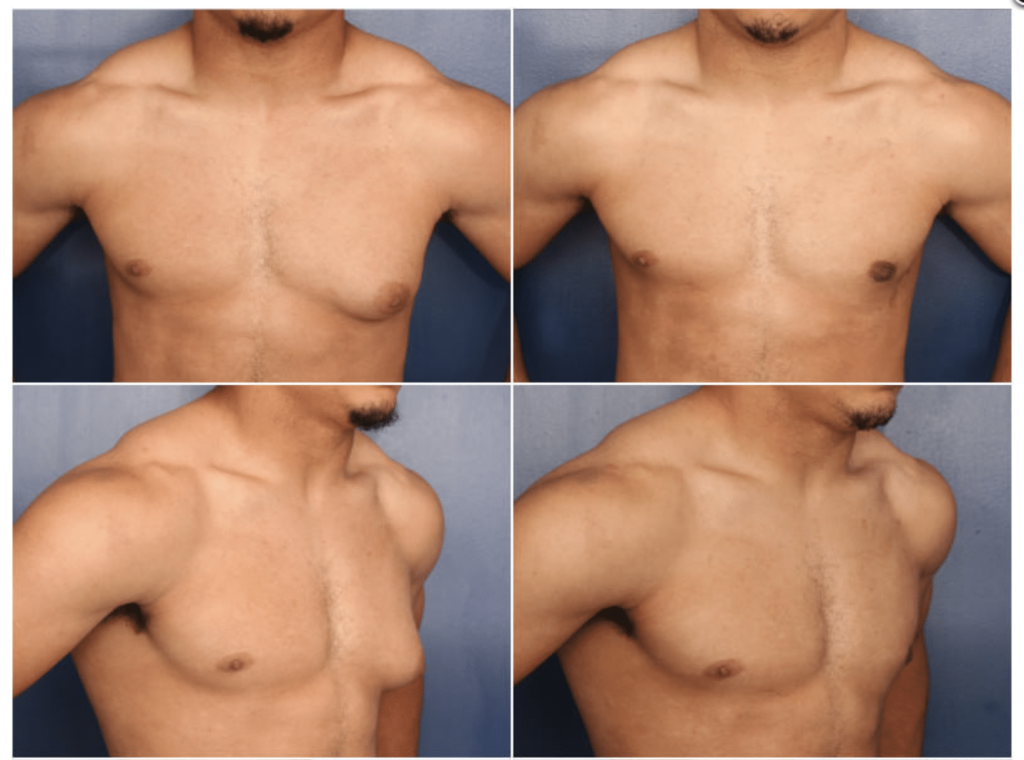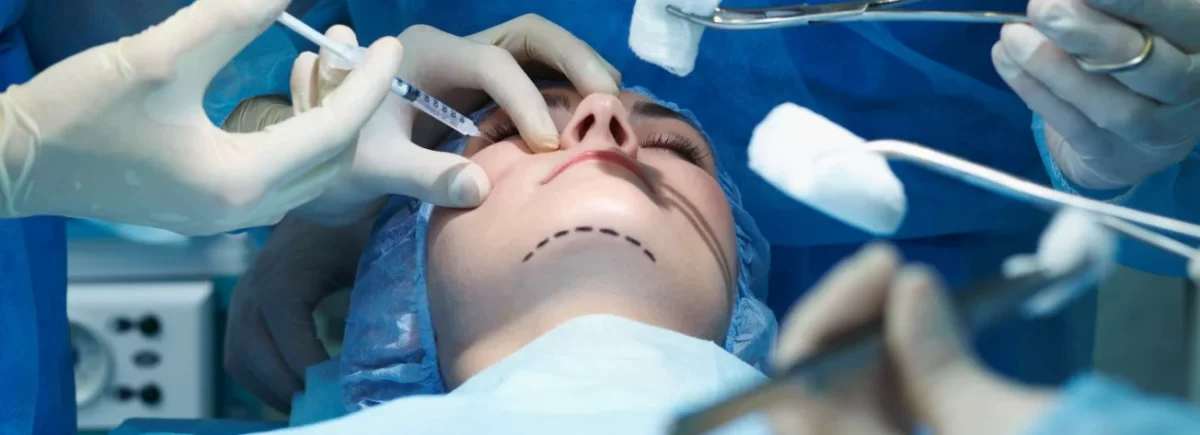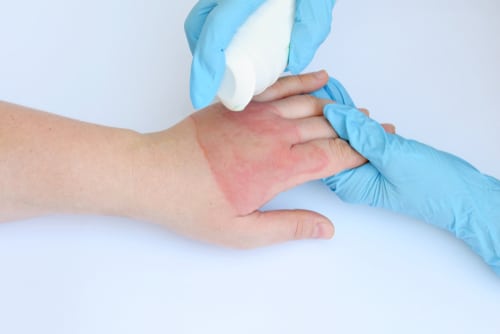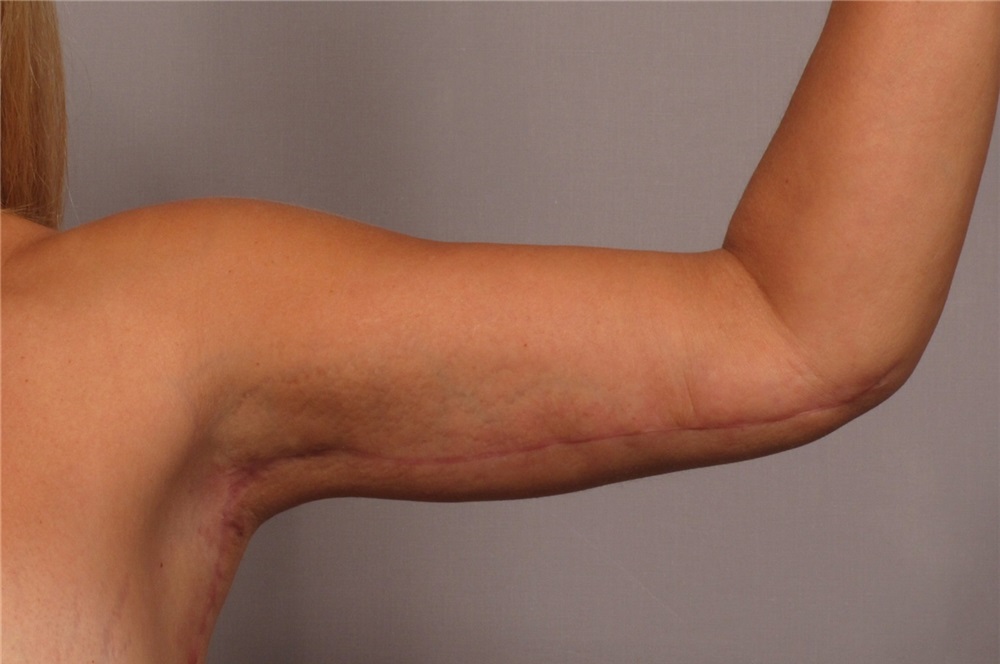Understanding Gynecomastia and Surgery
Surgery Risks
Gynecomastia surgery, while often successful, carries inherent risks. Complications can include infection, scarring, and asymmetry between breasts. Patients should weigh these risks carefully against the potential benefits.
Choosing a qualified surgeon is crucial to minimize complications. They should have extensive experience in gynecomastia surgery. Researching their background and reviewing before-and-after photos of previous patients can provide insight into their expertise.
Emotional Impact
The emotional toll of botched gynecomastia surgery can be significant. Patients often seek surgery to improve self-esteem and body image. A poor outcome can worsen these issues.
Support from family, friends, and mental health professionals can help individuals navigate these challenges. It’s vital for patients to express their feelings and concerns throughout the recovery process.
Legal Recourse
In cases of botched surgery, legal recourse may be an option. Patients should document their experiences meticulously, including consultations, procedures, and communications with the medical team.
Consulting with a legal professional specializing in medical malpractice can clarify the viability of a lawsuit. They can advise on the steps necessary to pursue compensation for damages incurred due to the botched surgery.
Identifying Signs of Botched Surgery
Uneven Contours
After gynecomastia surgery, the chest should appear more contoured and even. Uneven contours or lumps signal a problem. These can result from uneven fat removal or poor surgical technique.
Patients often notice this discrepancy when swelling subsides, usually a few weeks post-operation. Immediate action is crucial to address these issues before they become permanent.
Excessive Scarring
Scarring is expected after any surgery, but excessive scarring indicates a botched procedure. Thick, raised scars or keloids are not just cosmetic concerns; they can also be painful and restrict movement.
Early intervention with silicone sheets or steroid injections might improve their appearance. Consulting a skilled surgeon for scar revision is also advisable.
Persistent Pain
Pain right after surgery is normal. However, persistent pain that lasts beyond the expected recovery period is alarming. It could point to nerve damage or infection.
Patients should not dismiss ongoing discomfort as part of the healing process. Seeking medical advice promptly ensures timely treatment and prevents complications.
Infection Signs
Infections are serious but treatable if caught early. Redness, warmth, unusual discharge, and fever are key signs of infection.
Immediate medical attention can prevent the spread of infection and further damage to the surgical site. Antibiotics typically resolve these issues when administered in time.
Exploring Crater Deformity After Surgery
Crater Formation
Crater deformity emerges as a common complication post-gynecomastia surgery. It results when too much tissue is removed. This leaves a hollow, unnatural look.
Patients notice a sunken appearance around the nipple area. The severity varies, but it often leads to dissatisfaction. Many seek corrective procedures to regain a natural chest contour.
Corrective Measures
Correcting crater deformity involves specialized techniques. Surgeons might use fat grafting or filler injections to even out the chest area.
Fat grafting takes fat from another body part and injects it into the crater. This helps achieve a smoother, more natural look. Filler injections, though less permanent, can offer temporary relief for minor cases.
Both options require skill and experience. Choosing a qualified plastic surgeon is crucial for successful outcomes.
Emotional Impact
The emotional toll of crater deformity shouldn’t be underestimated. Patients often feel embarrassed or self-conscious about their appearance.
They report feeling worse than before their initial surgery. Support groups and counseling can be beneficial during this challenging time. It’s important for patients to know they’re not alone in their journey towards recovery.
Avoiding Botched Gynecomastia Procedures
Research Surgeons
Finding a skilled surgeon is crucial. Look for those with extensive experience in gynecomastia surgery. They should have a portfolio of before-and-after photos to show their work.
It’s essential to choose someone certified by a recognized medical board. This ensures they’ve met specific standards in their field.
Understand Risks
All surgeries carry risks. Understanding these can help manage expectations. Discuss potential complications with your surgeon beforehand.
Common risks include infection, scarring, and uneven chest contours. Knowing these can guide your decision-making process.
Post-Surgery Care
Proper aftercare is vital for healing. Follow your surgeon’s instructions closely. They may include wearing compression garments and avoiding certain activities.
Ignoring these guidelines can lead to complications or unsatisfactory results.
Seek Second Opinions
If unsure, get a second opinion. This can provide peace of mind or offer alternative treatment options.
Hearing from multiple professionals ensures you’re making an informed choice about your body and health.
Selecting a Qualified Plastic Surgeon
Credentials Check
It’s crucial to verify a surgeon’s credentials. Look for board certification in plastic surgery. This ensures they have undergone rigorous training and exams.
Board-certified surgeons know how to minimize risks. They also provide detailed pre-surgery consultations. These meetings help set realistic expectations.
Experience Matters
Opt for a surgeon with extensive experience in gynecomastia surgery. High volume in this specific procedure translates to enhanced skill sets and familiarity with various male breast reduction techniques.
Experienced surgeons can often show before-and-after photos of their work. These visuals offer insight into their capability and aesthetic style.
Patient Reviews
Read reviews from previous patients. They offer valuable insights into the surgeon’s approach and patient care quality.
Positive feedback, especially regarding post-operative support, is a good sign. It indicates the surgeon’s commitment to patient satisfaction and safety.
Corrective Measures for Botched Surgeries
Revision Surgery
Revision surgery stands as a primary option for those facing complications from botched gynecomastia procedures. This corrective action involves a qualified plastic surgeon assessing the extent of the issue and planning a surgical strategy to rectify the problems. It’s crucial that patients choose surgeons with extensive experience in revision surgeries, ensuring they do not repeat past mistakes.
Patients must understand that revision surgeries might be more complex than the initial operation. They often require sophisticated techniques to restore both function and aesthetics. The recovery period may also extend longer than the first surgery.
Non-Surgical Options
In some cases, non-surgical interventions can address minor issues stemming from botched surgeries. Options like laser therapy and fat freezing have shown promise in correcting slight contours or asymmetry without the need for another invasive procedure. These methods come with shorter recovery times and less risk compared to surgical alternatives.
However, their effectiveness is limited to specific conditions. They cannot resolve severe complications or replace missing tissues. Patients should consult their surgeons to determine if non-surgical treatments are viable for their situation.
Legal Recourse
For individuals who have suffered significantly due to a botched gynecomastia surgery, seeking legal advice might be necessary. Medical malpractice lawsuits can provide compensation for physical, emotional, and financial hardships endured because of negligent surgical practices.
It’s important for patients to gather all relevant medical records and document their experiences thoroughly before pursuing legal action. A successful lawsuit can offer financial relief and help cover costs related to corrective measures.
Choosing the right path forward after a botched gynecomastia surgery requires careful consideration of all available options. Patients should prioritize consultations with highly experienced professionals who specialize in corrective procedures, ensuring they make informed decisions tailored to their unique circumstances.

Importance of Surgeon’s Gynecomastia Experience
Expertise Level
Surgeons with extensive experience in gynecomastia surgery are less likely to botch the procedure. They understand the nuances of male breast reduction and how to achieve a natural look.
Choosing a surgeon based on their gynecomastia expertise is crucial. They should have a proven track record, showcasing before and after photos of their work. This helps patients gauge potential outcomes.
Surgical Technique
The right surgical technique makes a significant difference. Experienced surgeons use methods that minimize scarring and ensure even contours post-surgery.
They also know how to handle complications should they arise. This expertise reduces the risk of needing corrective measures later on.
Patient Communication
Clear communication between the surgeon and patient is vital. It ensures that both parties have realistic expectations about the surgery’s outcomes.
An experienced surgeon can guide patients through the decision-making process effectively. They provide valuable insights into what can be achieved, helping patients make informed choices.
Scheduling Your Consultation Today
Surgeon Selection
After understanding the critical role of a surgeon’s experience in gynecomastia surgery, it’s time to choose wisely. The first step is scheduling a consultation. This meeting is your opportunity to assess the surgeon’s expertise firsthand.
They should openly discuss their track record and show before-and-after photos of previous surgeries. Their willingness to address your concerns and explain the procedure in detail speaks volumes about their professionalism and expertise.
Key Questions
During your consultation, arm yourself with questions. Inquire about the number of gynecomastia surgeries they’ve performed and the rate of successful outcomes. Ask about potential risks and how they handle complications.
This conversation should give you a clear picture of what to expect. It also helps build trust between you and your surgeon, which is crucial for a successful surgery.
Final Thoughts
Choosing the right surgeon for gynecomastia surgery can be daunting. However, taking the time for a thorough consultation can prevent botched results. Remember, this decision not only affects your physical appearance but also your mental well-being.
Trust your instincts during these consultations. If something feels off, consider looking elsewhere. Your comfort and confidence in your surgeon’s abilities are paramount.
Final Remarks
Gynecomastia surgery gone wrong can be a tough pill to swallow, but knowing your options and the importance of choosing the right surgeon can turn the tide. You’ve learned how to spot a botched job, the significance of experience in your surgeon, and corrective actions to take. It’s all about making informed decisions and not cutting corners on your health. Your confidence and well-being are at stake, so investing time in selecting a top-notch plastic surgeon is crucial. Remember, it’s your body, your rules.
Ready to take the next step? Don’t let fear hold you back. Schedule your consultation today and start your journey towards reclaiming your confidence with a team that understands the delicacy of gynecomastia surgery and prioritizes your safety and satisfaction. Let’s get this fixed, together.
Frequently Asked Questions
What is gynecomastia surgery?
Gynecomastia surgery reduces breast size in men, solving issues of enlarged breasts. It’s a precise procedure aimed at offering a more masculine chest contour.
How can I tell if my gynecomastia surgery was botched?
Signs include uneven chest appearance, significant scarring, or unexpected indentations. Promptly consult your surgeon if you notice these issues.
What is crater deformity after gynecomastia surgery?
Crater deformity is an indentation in the chest area post-surgery, often resulting from excessive tissue removal. It’s a key indicator of a botched procedure.
How can I avoid a botched gynecomastia procedure?
Selecting a highly qualified and experienced plastic surgeon is crucial. Ensure they have a proven track record with gynecomastia surgeries to minimize risks.
Why is the surgeon’s experience with gynecomastia important?
A surgeon’s experience ensures they’re familiar with the nuances of the procedure, reducing the risk of complications and ensuring optimal results.
What are corrective measures for botched surgeries?
Corrective options vary but may include revision surgery to address asymmetry or indentations. A skilled surgeon can assess and recommend the best approach.
Should I schedule a consultation for my gynecomastia concerns today?
Yes, scheduling a consultation is the first step towards understanding your options and how best to address your condition with expert advice.





















